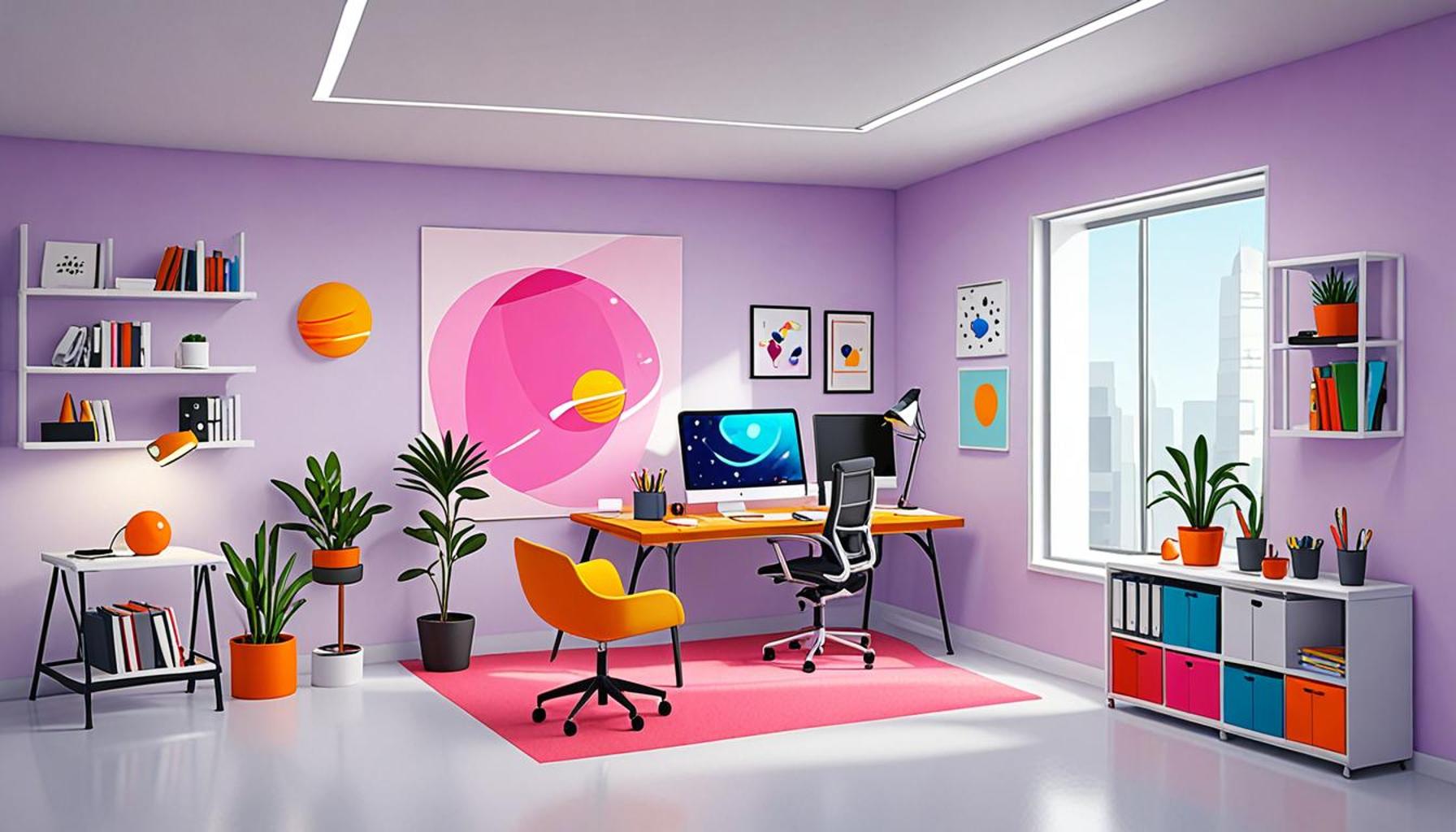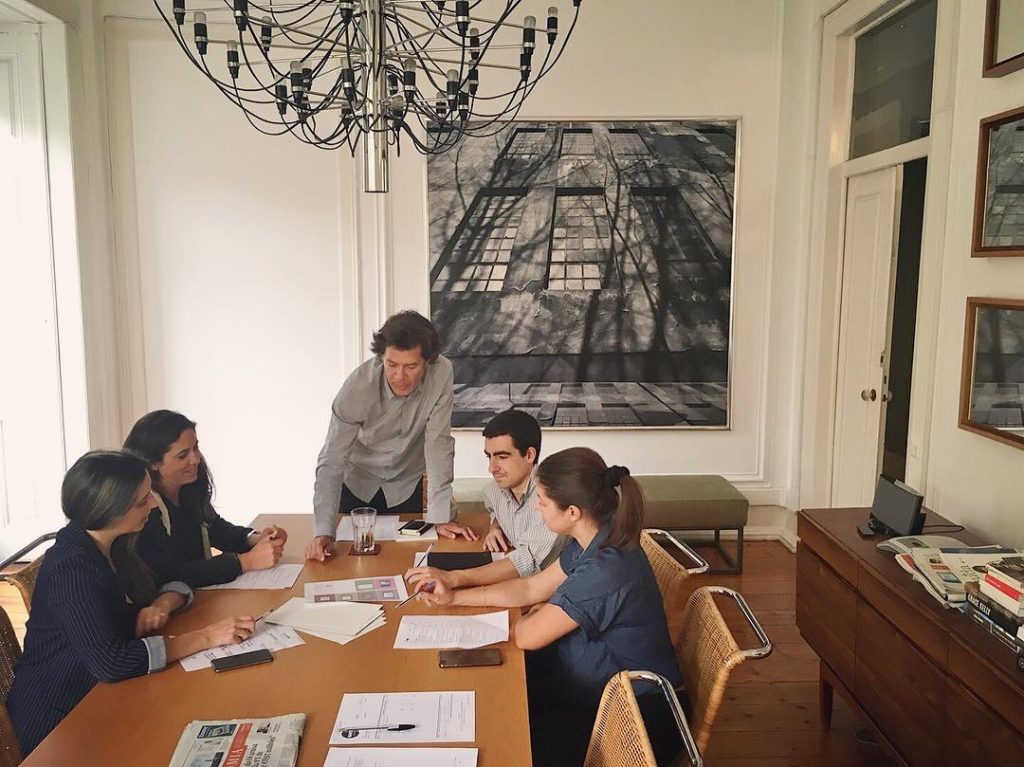Minimalism in Offices: Space Optimization Strategies for a Productive Work Environment

Rethinking Productivity Through Minimalism
In the fast-paced corporate landscape, particularly within Nigeria’s bustling cities, the challenge of maintaining productivity amidst distractions is increasingly prevalent. The concept of minimalism offers a compelling solution, enabling individuals to cultivate workspaces that encourage concentration and efficiency. A thoughtfully designed office can significantly shape not only how tasks are approached but also the quality of the work produced.
Here are some key elements that encapsulate the minimalism movement in a workplace setting:
- Decluttering: The act of removing superfluous items is crucial. A clutter-free environment reduces visual distractions and mental stress, making it easier to focus on current tasks. For example, a work desk in Abuja filled with stacks of unorganized papers can lead to frustration. Instead, a clean table with just a laptop, a notebook, and a pen allows for a clearer mind.
- Functional furniture: The selection of multifunctional pieces can maximize space efficiency. Consider a desk that can transform into a standing station or storage that doubles as seating. Such choices not only save room but encourage dynamic work habits, catering to the different ways professionals like to operate.
- Color schemes: The psychological effects of color in a work environment cannot be underestimated. Utilizing neutral tones—such as soft whites, greys, and beiges—have been shown to promote calmness and clarity, making it easier to brainstorm and think creatively. In Nigeria, incorporating local art or textiles in these tones can add an element of tranquility while maintaining a connection to culture.
- Smart organization: Implementing effective systems for organizing tools and supplies enhances accessibility. For example, using labeled containers for frequently used documents or deploying software for digital file organization can streamline processes, enabling smoother workflows and easier retrieval of information.
Research has illustrated that a well-structured workspace can elevate productivity levels by as much as 30%. For professionals in Lagos or Port Harcourt, where the hustle can be overwhelming, optimizing their workspace can lead to not just greater output but also an improved sense of well-being.
As you reflect on these insights, consider methods to reshape your own workspace. Simple changes can create a minimalist haven that not only increases productivity but also revitalizes your mental space. In the following sections, we will delve into practical tips and relatable examples of how minimalism can be effectively introduced into your office, giving you the tools to enhance both your environment and your work life.
RECOMMENDED: Check out this similar article

Implementing Minimalism: Steps Towards an Optimized Workspace
Adopting a minimalist approach in office design is not merely about aesthetics; it is fundamentally about enhancing efficiency and ensuring that every aspect of the workspace adds value. As businesses in Nigeria strive for sustainability and productivity, the principles of minimalism provide a blueprint for creating an atmosphere where employees can thrive. Here are some pivotal strategies for implementing minimalism in your office space:
- Assessing Your Needs: The first step towards minimalism is evaluating what you truly need in your workspace. Conduct a comprehensive inventory of all items in your office. Questions to consider include: What tools do you use daily? What resources are essential for your work? This reflective practice can help eliminate items that are rarely utilized, cluttering your workspace.
- Creating Defined Zones: Allocating specific areas for different tasks can streamline work processes. For instance, having a separate area for meetings, brainstorming, and focused work minimizes distractions. This strategic zoning allows for a clearer focus, amplifying productivity levels across diverse work activities.
- Embracing Digital Solutions: In an age dominated by technology, shifting from physical storage to digital systems can significantly declutter your workspace. Utilizing cloud storage systems and digital collaboration tools allows for effective information management without the need for bulky filing cabinets or endless paperwork. This method is particularly advantageous in Nigeria, where the transition towards a digital framework is increasingly viable.
- Investing in Quality Over Quantity: Minimalism encourages the selection of fewer pieces of high-quality furniture and equipment rather than numerous low-quality items. A well-designed chair or desk can enhance comfort and promote productivity, whereas subpar options can detract from your work experience.
- Incorporating Natural Elements: The introduction of plants and organic materials into your workspace can create a calming environment that fosters concentration. In cities like Abuja or Enugu, where urban life can feel hectic, having elements of nature can provide tranquility, making it easier to focus and feel inspired.
By integrating these strategies into your workspace, businesses can ultimately cultivate a nuanced approach to minimalism that encourages collaboration, creativity, and clarity. Notably, studies suggest that workplaces embracing minimalism report enhanced employee satisfaction and reduced stress levels, contributing to a positive work culture.
As we lean into the next aspects of minimalist office design, it’s vital for employers and employees alike to recognize the profound impact that a well-structured workspace can have on both productivity and mental well-being. Let’s explore how these principles not only benefit individual productivity but also promote teamwork and innovation in a corporate setting.
In the evolving landscape of modern workplaces, the emphasis on minimalism is more than just an aesthetic choice; it is a strategic approach to enhance productivity and foster creativity. With clutter being a significant distractor, adopting a minimalist design can lead to a streamlined work environment. This approach focuses on decluttering spaces, enabling employees to concentrate on their tasks without the visual noise that often surrounds them.
One powerful strategy within the realm of minimalism is the use of multifunctional furniture. Desks that can be adjusted for standing or sitting, or storage units that can double as seating, drastically reduce the amount of space consumed by traditional office furnishings. This flexibility not only saves precious square footage but also promotes a more dynamic workspace, allowing employees to adapt their environment to their specific needs throughout the workday.
Additionally, integrating natural elements, such as plants and natural light, into minimalist designs can significantly enhance the psychological well-being of employees. Studies have shown that these elements contribute to a healthier work atmosphere, reducing stress and increasing overall job satisfaction. By carefully selecting which decor elements to include, companies can create environments that are not only minimal but also inviting and stimulating.
As the demand for remote work rises, the necessity for adaptable office spaces has never been greater. Minimalist designs help businesses transform underutilized areas into functional zones that can accommodate various tasks, from collaborative brainstorming sessions to quiet individual work. Such flexibility is vital in today’s fast-paced corporate world, making minimalism not just a trend, but a long-term strategy for sustainable productivity in the workplace.
| Advantage | Description |
|---|---|
| Space Efficiency | Maximizes the use of available space with multifunctional furniture. |
| Enhanced Focus | Reduces distractions by creating a clean and organized environment. |
LEARN MORE: This related article may interest you
Enhancing Collaboration and Innovation Through Minimalist Design
In the pursuit of a productive work environment, it is imperative to recognize that minimalism transcends personal productivity. The design of office spaces can play a pivotal role in nurturing teamwork and encouraging innovation. By creating an environment that emphasizes minimalism, organizations can facilitate better communication and collaboration among employees. Here are some key principles to consider:
- Open Layouts: Embracing open layouts can break down physical barriers, promoting free flow of ideas. Unlike traditional cubicle arrangements, an open-office design allows team members to engage in casual interactions, which can lead to spontaneous brainstorming sessions and innovative solutions. For Nigerian companies, transitioning to this layout may require careful planning to ensure privacy and reduce noise distractions, yet the potential for enhanced collaboration makes it worthwhile.
- Flexible Workspaces: Minimalism advocates for the integration of adaptable workstations that cater to various work styles. Incorporating hot desking or shared spaces enables employees to choose where they work based on their current task at hand, fostering a sense of autonomy and flexibility. This type of configuration also encourages employees from different departments to interact, sparking creativity and cultivating a unified team culture.
- Display of Inspirational Art: A minimalist workspace need not forsake artistic expression. By showcasing thought-provoking artwork or motivational quotes, businesses can create a stimulating environment that inspires creativity among employees. In cities like Lagos or Port Harcourt, local artists can be commissioned to contribute to the office’s aesthetic, aligning with corporate values and supporting local talent.
- Resource Accessibility: An organized workspace can significantly ease collaboration. By ensuring that resources—such as projectors, whiteboards, and shared documents—are easily accessible, teams can work together more efficiently. Implementing systems for streamlined resource allocation can prevent wasted time looking for tools and materials, ultimately boosting productivity.
- Regular Space Evaluation: To maintain a minimalist approach, organizations should encourage periodic assessments of the workspace to identify clutter and unused items. Engaging employees in this process can create a sense of ownership and responsibility towards their environment. Regular “decluttering” sessions not only contribute to a tidy workspace but also refresh the mental spaces of employees, allowing for new ideas to flourish.
As research indicates, collaborative environments that prioritize a minimalist ethos lead to higher levels of employee satisfaction and overall job performance. A study conducted by the University of Exeter found that workspace design can influence productivity by up to 30%. For Nigerian businesses preparing to expand or reinvent their operations, investing in a minimalist office design can be a strategic move that elevates team dynamics and drives innovation.
Continually exploring the intersection of space and productivity not only adapts to the evolving needs of employees but also prepares organizations to embrace future challenges. Minimalism in offices is not just a trend; it is a necessary evolution in improving the productivity landscape in Nigeria’s fast-paced corporate environment.
YOU MAY ALSO LIKE: Read read another article
Conclusion: The Future of Workspaces in Nigeria’s Corporate Landscape
As organizations in Nigeria navigate an increasingly competitive market, the adoption of minimalism in offices emerges as a powerful strategy for space optimization that fosters a more productive work environment. The principles discussed—from embracing open layouts that encourage collaboration to implementing flexible workspaces catering to varied work styles—highlight the profound impact of a minimalist approach on employee engagement and creativity. Furthermore, by displaying inspirational art and ensuring resource accessibility, companies can create an atmosphere that not only promotes innovation but also instills a sense of pride and ownership among employees.
Regularly evaluating office space not only prevents clutter but also adapts to the evolving needs of a diverse workforce. This creates an environment where fresh ideas can flourish. In a culture where teamwork is essential, such minimalist strategies are vital in paving the way for a united and efficient corporate community. The evidence suggests that as organizations prioritize thoughtful workspace design, they can achieve substantial gains in productivity and employee satisfaction.
In conclusion, embracing minimalism is not merely an aesthetic choice; it is a forward-thinking strategy that reflects a company’s commitment to nurturing talent and fostering innovation. For Nigerian businesses ready to thrive in today’s dynamic work environment, investing in space optimization through minimalist design may well be the key to unlocking new potential and enduring success.



